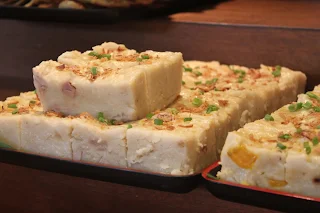The city of Johor Baru (or "new Johor") has always looked - and been - a significant transit city, straddling the two different worlds of cosmopolitan, resource-poor but business efficient Singapore and the resource-rich but race-conscious nation of Malaysia. The city's denizens see a stronger currency just a stone's throw away - added with higher costs of living, better career opportunities and a much cleaner state of things in Singapore. Many of its residents work or have an education on the island nation, but return every night to their beds on the Malaysian side. Above image, a vehicular jam builds up on a Saturday morning near the Johor border checkpoint.
Half-shaven coconuts lie for sale at a stall in JB Square (above). Fresh coconut juice is a vital ingredient to the Malay, Indian and Straits Chinese cultures and also to mitigate the humid heat of a city that lies close to the Equator. The varied uses of coconut, in all its forms, from husk to cream, cannot be underestimated for many Indian and Pacific Ocean countries.
The shopping centre nearest to the border, JB Plaza, even offers a mock UK telephone booth with working phone facilities. Image above - credit to Ms Auyong Kit Fong.
Pickled stuff (above) - whether on fruits, vegetables or even squid ("sotong") - are a hit with the palate of the various ethnic groups calling Johor Baru their home. Below, potato curry puffs on sale
as you enter Johor Baru from its train station.
Above, savoury yam and pumpkin cake slices offered as breakfast fare in Johor Baru. All pictures above were taken during a three hour stroll in the city before returning to Singapore.







































